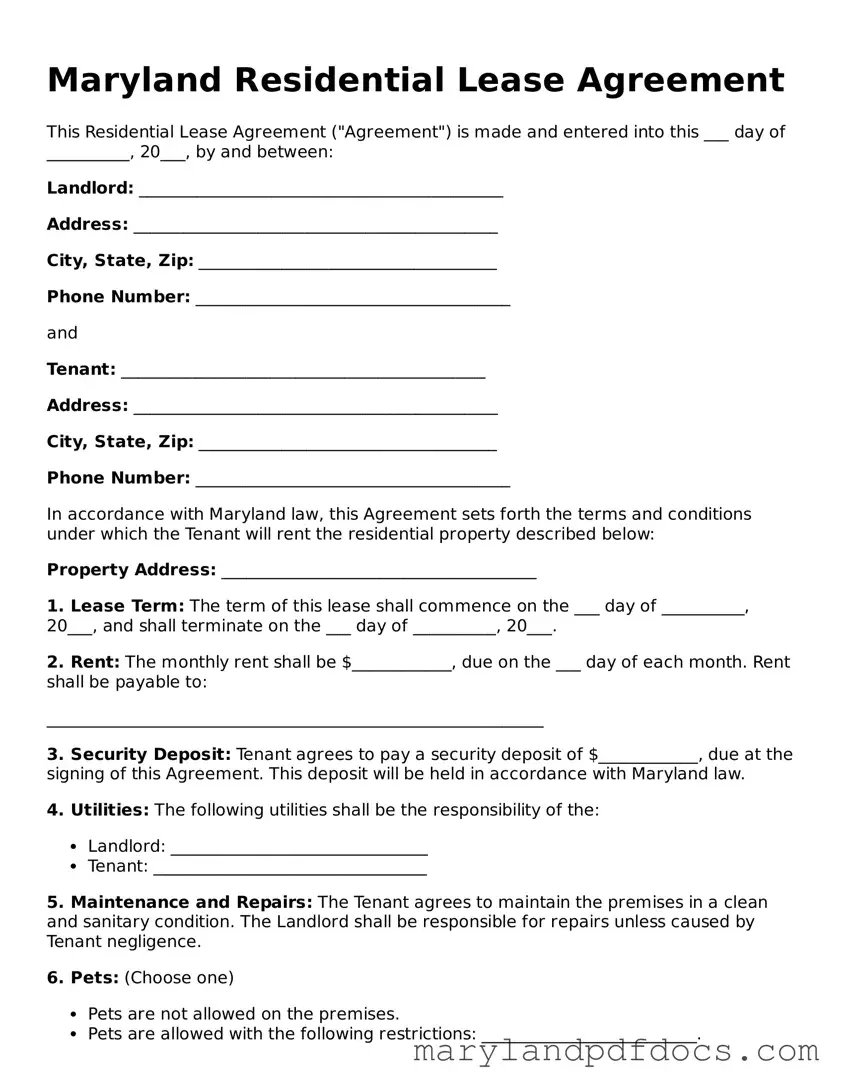Maryland Residential Lease Agreement
This Residential Lease Agreement ("Agreement") is made and entered into this ___ day of __________, 20___, by and between:
Landlord: ____________________________________________
Address: ____________________________________________
City, State, Zip: ____________________________________
Phone Number: ______________________________________
and
Tenant: ____________________________________________
Address: ____________________________________________
City, State, Zip: ____________________________________
Phone Number: ______________________________________
In accordance with Maryland law, this Agreement sets forth the terms and conditions under which the Tenant will rent the residential property described below:
Property Address: ______________________________________
1. Lease Term: The term of this lease shall commence on the ___ day of __________, 20___, and shall terminate on the ___ day of __________, 20___.
2. Rent: The monthly rent shall be $____________, due on the ___ day of each month. Rent shall be payable to:
____________________________________________________________
3. Security Deposit: Tenant agrees to pay a security deposit of $____________, due at the signing of this Agreement. This deposit will be held in accordance with Maryland law.
4. Utilities: The following utilities shall be the responsibility of the:
- Landlord: _______________________________
- Tenant: _________________________________
5. Maintenance and Repairs: The Tenant agrees to maintain the premises in a clean and sanitary condition. The Landlord shall be responsible for repairs unless caused by Tenant negligence.
6. Pets: (Choose one)
- Pets are not allowed on the premises.
- Pets are allowed with the following restrictions: __________________________.
7. Governing Law: This Agreement shall be construed in accordance with the laws of the State of Maryland.
8. Signatures: By signing below, both parties agree to abide by the terms and conditions outlined in this Residential Lease Agreement:
_____________________________
Landlord Signature Date: _______________
_____________________________
Tenant Signature Date: _______________
This Agreement represents the entire understanding between the parties and supersedes all prior discussions or agreements, whether written or oral.
